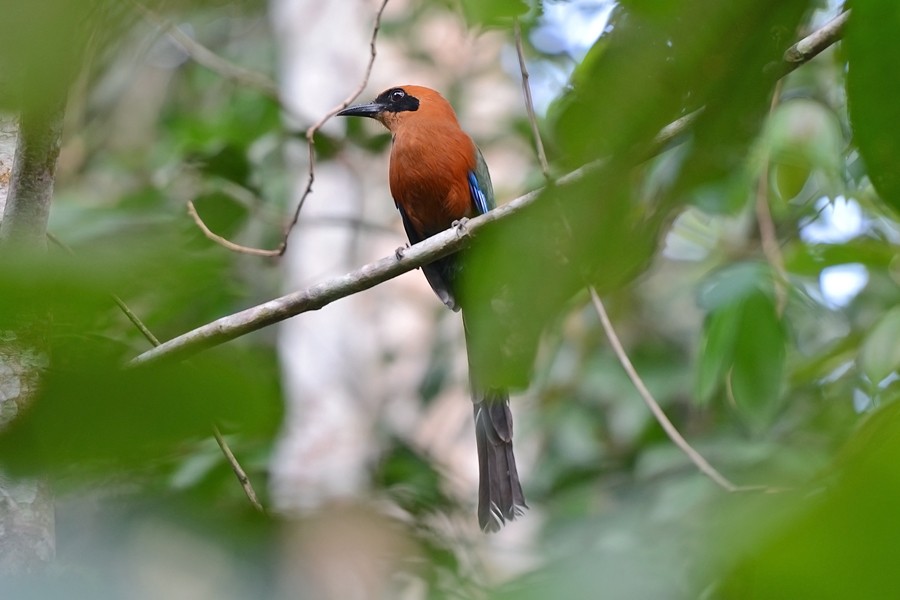Rufous Motmot
A species of Rufous Motmots Scientific name : Baryphthengus martii Genus : Rufous Motmots
Rufous Motmot, A species of Rufous Motmots
Botanical name: Baryphthengus martii
Genus: Rufous Motmots
Content
Description General Info
Description
The rufous motmot (Baryphthengus martii) is a near-passerine bird which is a resident breeder in rain forests from northeastern Honduras south to western Ecuador, northeastern Bolivia, and southwestern Brazil. This large motmot is 46 cm (18 in) long and weighs 195 g (6.9 oz). It is mainly cinnamon-rufous, with a black face mask and central breast spot, green wings and sides, a greenish-blue lower belly, and dark blue tail and flight feathers. The tail is very long and has a bare-shafted racket tip. The bill and legs are black. Young birds are paler and duller than adults, and lack the tail rackets and black breast spot. The call of the rufous motmot is a low owl-like hoop hoop huhuhuhuhuhu. This is a bird of tall wet forest and second growth. It nests in a 4–5 m (13–16 ft) long tunnel in a bank or the side of a mammal burrow. The clutch size and eggs are undescribed. Rufous motmots feed on insects, lizards, fish, crabs, and also consume many fruits, especially those of palms and Heliconias. These birds often sit still on a canopy perch, and in their dense forest habitat can be difficult to see, despite their size and colour. The binomial commemorates the German botanist and explorer Carl Friedrich Philipp von Martius. 
Size
47 cm
Nest Placement
Cavity
Feeding Habits
Rufous Motmot's diet includes invertebrates, small vertebrates, and fruits, with a preference for insects and arachnids. Rufous Motmot forages by sallying from perches to capture prey. Unique adaptations for their diet include a sturdy bill for consuming hard-bodied invertebrates.
Habitat
Lowland evergreen humid forest, secondary forest with taller emergent trees, along water courses, open secondary forest, plantations, larger patches of heavier forest, middle strata of tall, primary forest, higher subcanopy of secondary forests of shorter stature
Dite type
Omnivorous
General Info
Feeding Habits
Bird food type
Species Status
Not globally threatened.
